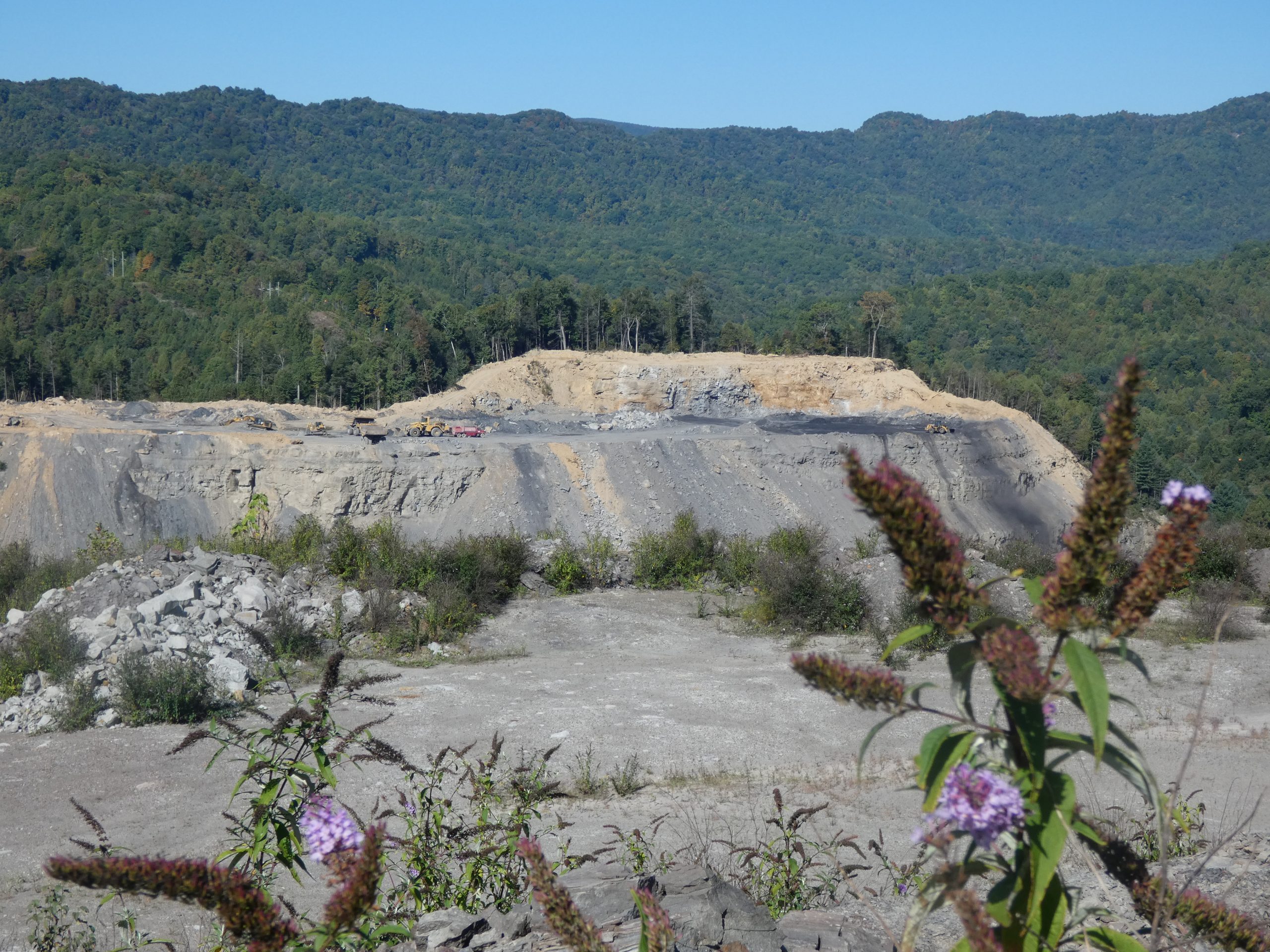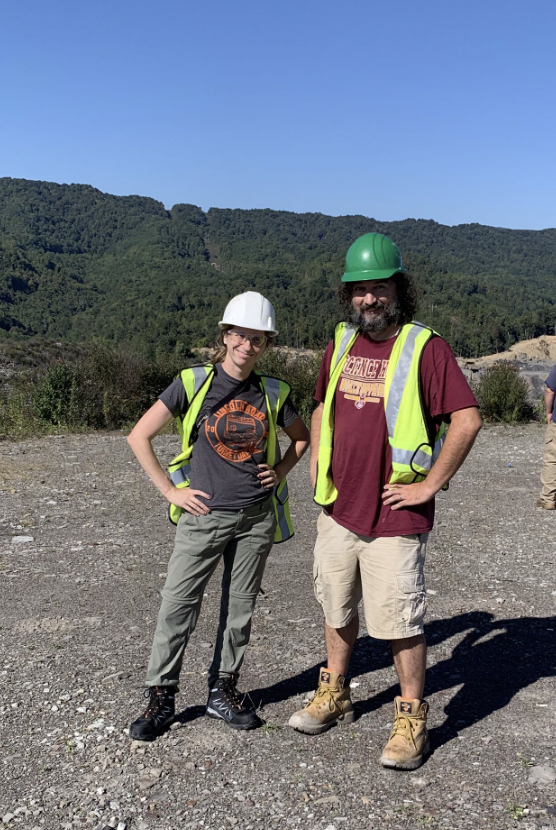Front Porch Blog

Roughly two decades after A&G Coal Corporation acquired the Looney Ridge mine in Virginia, cleanup is still not completed. Following years of citizen complaints and a legal intervention from Appalachian Voices, Southern Appalachian Mountain Stewards and the Sierra Club, the company is slowly advancing mine reclamation in accordance with a settlement agreement. Photo by Chelsea Barnes, Appalachian Voices
In recent U.S. House and Senate hearings, state regulators criticized the U.S. Office of Surface Mining Reclamation and Enforcement for its oversight of the distribution of money from the Abandoned Mine Land fund to states. The fund pays for cleanup of mines abandoned prior to 1977. Through the Bipartisan Infrastructure Law, the fund received over $11 billion to make up for a shortfall between what has been raised from a tax on current coal production and the actual cleanup costs of mines abandoned decades ago.
The influx of money was a huge win for state mining agencies and for communities still dealing with these decades-old abandoned mine land sites. Even though the increased funding is a win-win for all involved, state regulators complained about a slow and burdensome distribution process.
At the same time, however, these regulators are ignoring a growing crisis unfolding in modern mine reclamation. Coal companies are often failing to complete timely reclamation, and safeguards to ensure mine cleanup are failing. And no fund equivalent to the AML fund exists to clean up modern mines. Communities are already seeing a new, more devastating wave of abandoned mines — a problem that will get worse without action. Newer abandoned mines are often larger, closer to communities and result in more environmental damage than older mines because of the introduction of mountaintop removal mining in the 1970s and other factors.
Tell regulators to make sure coal mines are cleaned up!
Peter Morgan, a senior attorney with the Sierra Club, testified to the growing problem at the House hearing. Check out the exchange between Representative Alexandra Ocasio-Cortez and Morgan below for an overview of the modern mine reclamation problem:
In 1977, Congress passed the Surface Mining Control and Reclamation Act to clean up mines already abandoned and to ensure future coal mines would be reclaimed reasonably quickly and could not be abandoned without adequate funding to cover cleanup costs. OSMRE was created to enforce the law and oversee state mining agencies. The increased oversight addressed some of the most egregious problems, but surface mining continued to pollute the environment and cause harm to nearby communities. And now, as the coal industry winds down, the law is proving insufficient to ensure coal mine reclamation.
There are two main reasons the law is failing — regulators have set the amount of money for required reclamation bonds too low, and they are not strictly enforcing the requirement that coal companies reclaim land and water contemporaneously with coal removal.
Coal bankruptcies are exacerbating the issue. In the last decade, over 70 coal companies have declared bankruptcy. Four of the largest mine operators offloaded almost $2 billion in environmental liabilities and more than $3 billion in retiree liabilities through the bankruptcy process between 2012 and 2017. Many of the offloaded permits have since gone through additional bankruptcies and remain unreclaimed today.
A group of community and environmental organizations including Appalachian Voices outlined these concerns to OSMRE shortly after President Biden took office in 2021. The groups recommended 15 steps OSMRE could take to address issues with reclamation and bonding. As of late 2023, OSMRE has not implemented any of the recommendations.
Federal law requires timely reclamation of mines, concurrent with coal removal, but this part of the law is weak. Coal companies typically prioritize coal removal, leaving large areas unreclaimed with little pushback from regulators. To avoid working on reclamation, coal companies often place mines in idled status and cite “temporary market conditions” as the reason, even though it is now clear that poor market conditions for thermal coal are likely to be permanent. The result is “zombie mines” — functionally abandoned unreclaimed mines that sit for years, deteriorating and becoming more dangerous and more expensive for regulators to ultimately reclaim.
The 1977 surface mining law was supposed to ensure that no mines would ever again be abandoned without funds available to the responsible government entity to complete reclamation. To do this, the law required companies or their insurers to post bonds that would give government agencies the resources to clean up the mines if needed. In practice, many state bonding programs are too weak. Bond amounts are set too low. A few companies still provide self-bonds, where they give only their word, rather than any money or collateral, to ensure reclamation. And several Eastern states utilize pool bonds, where coal companies pay only a fraction of reclamation costs into a shared pool.

An aerial view of a Revelation Energy mine in 2019 shows some regrading and vegetation growth, but also obvious erosion issues and much more work needed. This permit was revoked during the Blackjewel bankruptcy, but later reinstated and transferred back to the mine’s earlier owner, Tom Scholl. The permit has had numerous issues, including recent Clean Water Act violations. Photo courtesy of Kanawha Forest Coalition
West Virginia uses a pool bond. A 2021 West Virginia legislative audit found that mine-specific bonds in the state cover only 10% of projected reclamation costs. The state pool bond is supposed to pay for remaining reclamation costs, but the study determined the pool covered less than 40% of the liability projected over the next 20 years. The state could face a shortfall of hundreds of millions of dollars.

Chelsea Barnes and Matt Hepler of Appalachian Voices participated in a 2023 mine inspection as part of the settlement we, Southern Appalachian Mountain Stewards and the Sierra Club reached with A&G Coal Corporation. Photo by Megan Geiger.
Because reclamation costs are so high and available bond funds so inadequate, regulators have every incentive to look the other way. Despite all the evidence of a looming crisis, most regulators do not admit that there is a problem. Instead, community groups like mine take on the task of compiling data, assessing risk and publicizing the issue. Analyses by the Western Organization of Resource Councils and Appalachian Voices indicate there are nearly 1 million acres of modern coal mines across the country in need of reclamation.
Earlier this year, Southern Appalachian Mountain Stewards, Appalachian Voices and the Sierra Club had to negotiate a court-ordered settlement to ensure reclamation of three large surface mines in Wise County, Virginia. The original reclamation funding was provided through unreliable self-bonds by A&G Coal Corporation. Because of insecure self-bonds, these mines had been allowed to sit idled and unreclaimed for nearly a decade. Even with a court order, it’s unclear if these mines will be cleaned up.
Almost three years have passed since we and partner organizations told OSMRE what they could do to address the bonding and reclamation crisis. The agency has not implemented any of the recommendations, and time is running out. As the industry continues to decline, coal companies have fewer resources to complete reclamation.
It’s not too late to change course. Earlier this month, Appalachian Voices, Appalachian Citizens’ Law Center and Sierra Club sent a letter to Acting Deputy Secretary of the Interior Laura Daniels-Davis urging DOI, which oversees OSMRE, to take three specific steps that are achievable over the next year and would have a clear positive impact on the reclamation crisis.
Tell regulators to make sure coal mines are cleaned up!
- OSMRE must collect and publicize information on mine production and reclamation status for all coal mines to identify the full set of functionally abandoned permits.
- DOI must conduct a stress-test for state bond pools and surety bond providers.
- DOI must work with states to rigorously enforce the Surface Mining Control and Reclamation Acts contemporaneous reclamation requirements, ensuring mine operators are reclaiming land as they go.
We believe these steps are both achievable over the next year and will have a lasting positive impact on modern mine reclamation across the country. Through decisive action, the Biden administration can avoid a new generation of dangerous, polluting, economically unproductive abandoned mine lands while creating more mine cleanup jobs. Focusing on reclamation of both historic and contemporary mine land simultaneously will only strengthen the economic and environmental justice impact of mine cleanup in coal communities, and can ensure we put an end to the abandoned mine crisis once and for all.
PREVIOUS
NEXT

Leave a comment
Your email address will not be published. Required fields are marked *


Leave a Comment